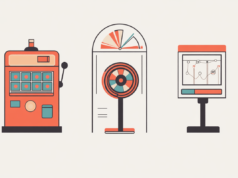The first use of computers was pretty simple. Scientists performed calculations, kept the data on punch cards, sent astronauts to the moon, and hoped they would come back. Each computer was a world of its own, a tool on which experts punched in one set of numbers and received a different set.
As learning about machines evolved, the next step was to find ways to connect the terminals so that users could share information. The TCP/IP protocol created a set of rules to govern the way computers communicate. But having worked out how to make the machines talk, engineers needed something to say. So the second step in the development of the Web was to create a library of pages that users could access for information and entertainment.
Those pages were originally text-based because that was all the communication channels would allow. As bandwidth widened, content found room for images, which led to the third step in the Web’s evolution: a three-dimensional world users could navigate as though it were physical.
That mostly happens in gaming, but we’ve now had about twenty-five years of text-based, two-dimensional networking and a similar period of three-dimensional gaming in which we answer the Call of Duty or follow an Assassin’s Creed on Xboxes and Playstations.
All this means we’re about due for a new development, and according to Dan Mapes, co-founder of Verses.ai, a cognitive computing company specializing in artificial intelligence, that step is coming now.
The Dawn of the 3D Internet and AI-Powered Evolution
From mid-2025, Mapes argues, the world will enter the age of 3D Internet. Headsets will come down in price for those who want a fully immersive experience. New three-dimensional applications will come out for business, government, entertainment, and health. Everything now available on the Worldwide Web will be available on more than one plane.
“In the future, people are … never going to want to come to a Facebook page and send notes to each other when they can be hanging out together in a virtual world,” Mapes told Joel Comm and Travis Wright of The Bad Crypto Podcast. “Facebook took one look at it and they went, ‘Oh my God.’”
Mark Zuckerberg might have moved early, but he was right to shift focus from Facebook to the metaverse, argues Mapes.
But the development of spatial computing is only one part of what Mapes sees as the next step in the development of the Internet. At the same time that content is becoming three-dimensional, artificial intelligence is changing what data can do — and in the process, it’s creating an entirely new kind of computer.
AI’s Evolutionary Path Beyond Machines
“They’re not really machines,” says Mapes. “They’re really sentient entities that are like digital organisms.”
He compares the evolution of an artificially intelligent machine with autopoiesis, a term coined in the 1970s to describe the way organic systems organize and maintain themselves, learning through their experience with the world. Humans, for example, don’t need to be updated at regular intervals to learn and develop. Growth happens constantly. Experience teaches babies how to crawl, then walk, then ride a bike, then slam doors and talk back. People are self-evolving. The combination of constant data and artificial intelligence software will give computers a similar ability.
Mapes differentiates between the language learning models of tools like OpenAI and the active inference he envisions computers developing. Language learning models are content creators. They gorge on vast amounts of data and then regurgitate that data to answer questions. Active inference constantly engages with the world, drawing in new data to produce results that are always up-to-date.
Artificial intelligence and automotive data in new cars, for example, can manage the flow of traffic lights to enhance efficiency. Active inference allows machines to look at the world through a network of connected devices to draw real-time conclusions about cities, factories, hospitals, and education centers.
“We’re going to have a global nervous system that really helps us manage our climate, our finances, other kinds of things,” predicts Mapes. “No one’s going to be left behind in the future … There’s going to be universal housing and universal healthcare. Universal education available to everybody. Right now, half the planet doesn’t even have access to a decent school system. By 2050, everybody’s going to have access to a better-than-Harvard education for free globally.”
Challenges and Opportunities of Unleashing AI’s Potential
Mape’s prediction sounds idealistic, and it depends on at least two requirements. The first is technology, and the second involves embedding artificial intelligence across a broad swathe of life.
That’s where Mapes’s company comes in. In early 2024, Verses.ai will begin offering tools that allow developers to create their own AI applications.
“We’re going to do what Apple did with iOS,” explains Mapes. “When they launched the iPhone, it came with ten apps: messaging and navigation and notes and things like that. Apple had to build all those because they built iOS, but then they opened the App Store and said, ‘You guys make the apps.’ We followed that model as well.”
Manufacturers of products from white goods to personal transport will be able to integrate artificial intelligence into their products, enabling those products to both gather data and use that data to constantly improve their services.
With that gathering of private data will come regulation. Initial attempts at governance will come from the industry itself, through the establishment of its own guardrails and standards. Just as the Web’s standards create challenges for child pornographers and terrorists, the new Web will implement barriers to safeguard data. Verses.ai has already teamed up with law firm Dentons to produce an International Rating System for Autonomous Intelligent Systems (AIRS).
How well that system will operate and whether it will be adequate remains to be seen. But as the new Web develops, there will be plenty of intelligent applications watching and suggesting smarter ways to keep everyone safe in the world of spatial computing.









